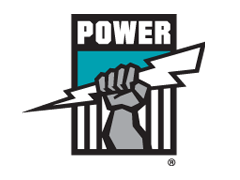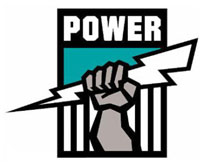Opinion Statement
Port Adelaide FC Report
During the 2015/2016 season, I was involved as Data Scientist and Strength Coach for the Port Adelaide Football club within the Australian Football League, that I had to leave due to family issues. It was outstanding gig and experience and I am more than thankful and proud for the opportunity to be a part of such a great club.
Now, exactly four years later, I stumbled on my report or opinion statement that I have left to my, at that time boss, Darren Burgess. This report contains some of my ideas for improvement and general observations, which are most likely already implemented in the club, now led by the great Ian McKeown “Mackers”, who was head S&C during my time at the club.
My motivation behind publishing this document is solely informational – I have improved some of my reasoning and planning since that time (even wrote about most of them), but I do think it could be an interesting read, particularly for those working in the AFL.
Enjoy it and please make sure to share your thoughts in the forum.
Opinion Statement
Mladen Jovanovic
Adelaide, 4th May, 2016
Introduction
This Opinion Statement should have been written before the start of the in-season period, mainly for the sake of avoiding being influenced by the in-season results. I had the intention in writing it before, but didn’t find the necessary time to do so. Hence, I know it will be hard to avoid viewing this as “report after the battle”. Most if not all of the following points would have been covered if this document was written before.
There are numerous things that are working wonderfully with PAFC, and honestly this is the best organized club I have seen so far. Sports science, S&C, rehab, athletes and culture-wise. I could easily write much longer opinion paper on all the great things happening, but I will focus on things that I reckon could be improved.
Phases in the Game Development
Each sport passes through several developmental phases, when different “rate limiters” and paradigms are dominant in the game play understanding. Since I am not an experienced Australian Rules viewer and historian, I can only make inexperienced guesses.
Aussie Rules Football seemed to be really physical, almost brutal sport years ago. The emphasis was on physicality and contact game, without too much running and tactics. Due to the rule changes, the game became more running based – where players were covering a lot of ground and running workload was emphasized.
Similarly, soccer and other sports passed through similar phases. Years ago, it was thought that the more you run in soccer game, the better you will play. More running = higher chance of succeeding. Unfortunately, or luckily, recent research showed actually the opposite (but without big effect). Better teams run LESS, because they impose their game style/strategy on the opponent. Hence, the goal per se was not to run more, but to run less and dominate the opponent with smarter team play and game plans.
I guess that Aussie Rules Football is going through a similar transition. As in soccer couple of years back, everyone is talking about the distances run and the running workload of the players. This is also a problem of biased observer: dominating team seems to be faster and more agile, even if they are probably running similarly as the losing team. What is perceived as faster, is the movement of the ball and game play. So, the goal is to be tactically smarter team and run less, or make others run more.
In my opinion, this current paradigm of running more and Australian Rules Football being “running sport” is dominating the approach to training and competition preparation. It is important to be physically fit, but it is more important to be tactically smart – both individually and as a team.

Season Organization
Season organization is something that can be completely out of control of PAFC. In my opinion, the Football Season could easily be split in two parts with off-season and pre-season in between the halves.

Even if this might be the pipe dream, certain changes could be made in the pre-season. There is a specific period in the pre-season #2 during which players lose their focus due to too much waiting to play. To avoid this, pre-season #2 could be broken into two parts, with the introduction of friendly games and “bye” week. Just a potential solution.
No Friendly Games
NAB cup was interesting option, but what seems to be missing, are the friendly games. Why do we need them? Because we can test our game plans and adjust accordingly, before it is too late (as between NAB and in-season).
Not sure if there are any AFL regulations, but the clubs could agree to play very short friendlies earlier in the pre-season. Both can use to test and adjust the program, rather than to wait to gain information and evidence in the NAB cup or in-season when it might be too late to change things.
This being contact game might demand some rule changes in the friendlies (rotations, contact, duration and so forth) to make it doable.
Weekly Schedule
Pre-Season
Generally, there is nothing wrong with the pre-season microcycle structure. In my opinion, the structure could change based on the feedback from the players, individual needs and observed/measured performance, making it more agile.











Responses